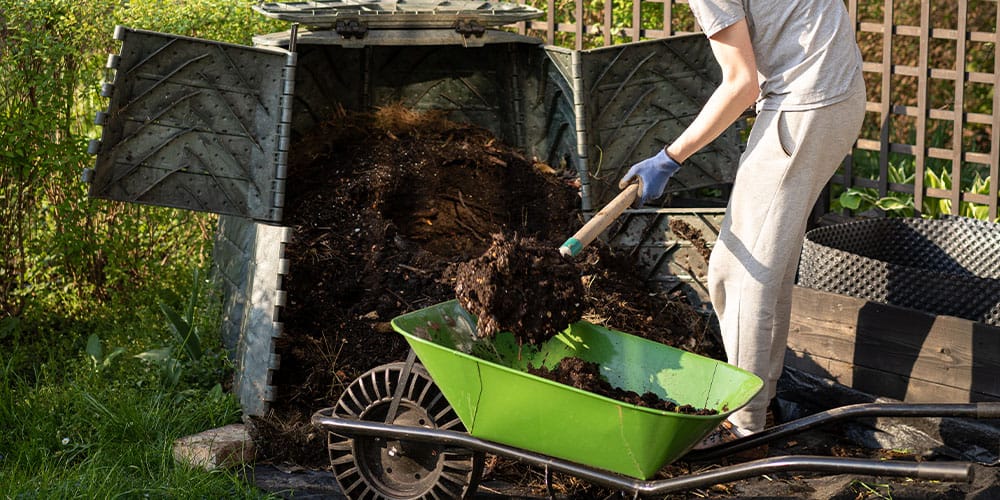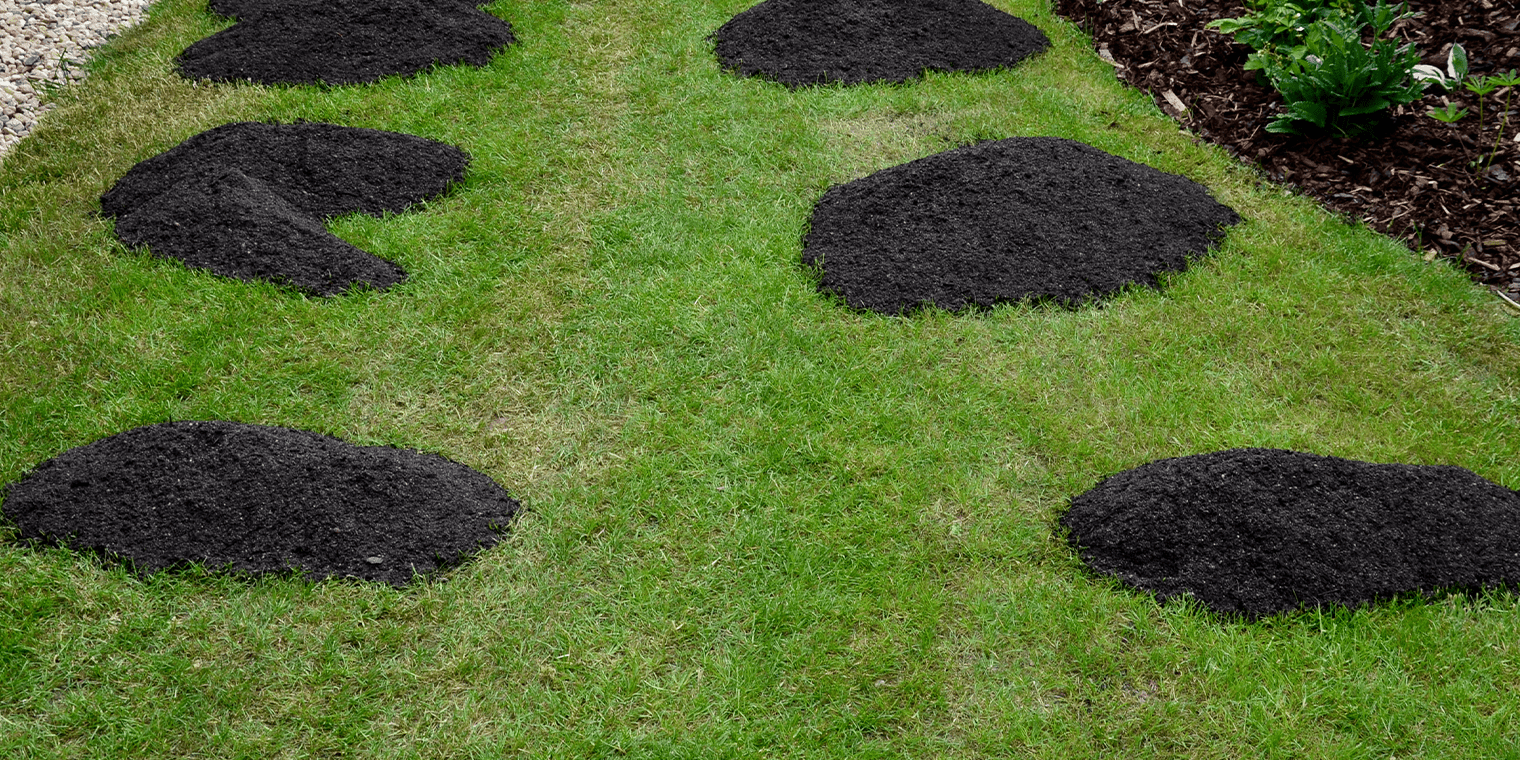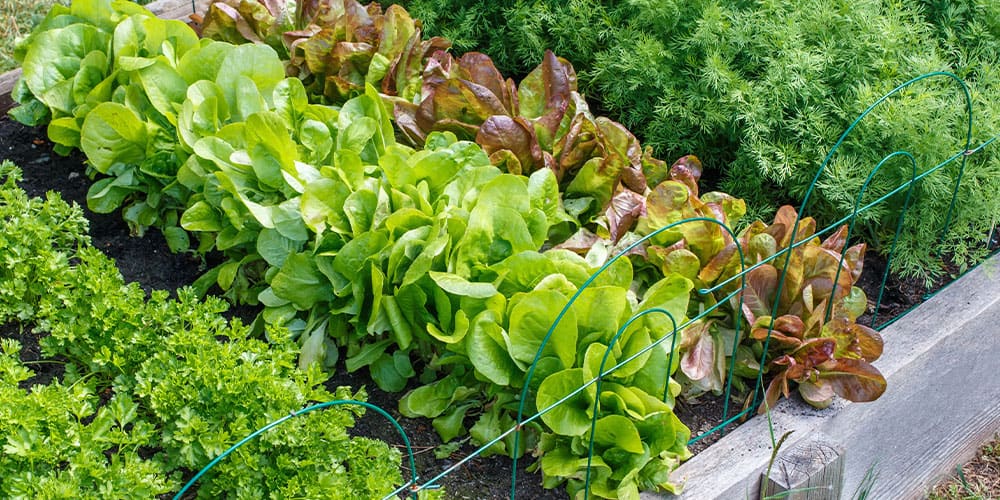Compost has endless benefits, from retaining nutrients in the soil to protecting plants from disease. You can use compost in your yard in many ways; it is an excellent additive for crops, and your flower beds and trees can also benefit from enriched soil.
The Benefits of Adding Compost to Your Garden Beds in New Hampshire
You may not notice a difference once you add compost to your garden since it looks so similar to topsoil, but your flowers definitely will! Compost is an excellent natural fertilizer for planters and flower beds because it improves your soil’s structure, adding nutrients that your plants have absorbed through the growing season. With these added benefits, your plants can grow stronger and healthier, increasing their chances against pests and disease!
Don’t forget these essential tips when adding compost to your soil or sprinkling it along your already-planted flower beds:
- Add approximately 1 inch of compost to the soil in the spring.
- Apply approximately 3/4 to 1 inch of compost in the fall.
- Add compost to your soil at a 25% ratio before planting.
 How to Add Compost to Tree Beds
How to Add Compost to Tree Beds
Compost is a stellar organic amendment for any garden plant, and your tree beds are no exception! Tree planting requires high-quality, high-buffer-capacity, moisture-retentive compost made of rich, dark peat. Mix your organic compost from the garden center with your original soil when you plant your trees. You can easily rake your compost into the soil of your existing tree beds; in general, it is a good idea to apply a layer of compost about 1-2 inches deep at the base of your tree beds once per year.
Use Compost on Your Lawn
Your lawn is comprised of literally thousands of individual plants, and they deserve some delicious compost too! Spread compost on your lawn as a topcoat to cover a specific trouble area or the entire lawn for rich growth next year.
 The best time to topdress your lawn with compost is right after aerating, but you can topdress anytime when the ground is not frozen. You can apply compost every spring when the lawn is just beginning to green up and in late autumn when the leaves are starting to fall; this will keep your grass looking beautiful all year! You can spread it across small yards with a compost wheel or peat spreader or use your hands to sprinkle it evenly.
The best time to topdress your lawn with compost is right after aerating, but you can topdress anytime when the ground is not frozen. You can apply compost every spring when the lawn is just beginning to green up and in late autumn when the leaves are starting to fall; this will keep your grass looking beautiful all year! You can spread it across small yards with a compost wheel or peat spreader or use your hands to sprinkle it evenly.
 Use Compost in a Veggie Garden
Use Compost in a Veggie Garden
Do you want to reap a harvest of delicious-tasting vegetables next season? The best way to achieve that is by adding compost to your vegetable garden soil. Vegetables intake a lot of nutrients from the soil, so replenishing your soil before the next season is essential. We recommend working a decent portion of compost into the soil rather than adding it bit by bit; you want your plants to have access to that goodness regardless of how deep or wide their root systems grow! A 1:4 ratio of compost to soil, so your new soil is about 25% compost.
Add Compost When You Replace Your Mulch
Decomposing mulch will contribute to the soil nutrients in your garden beds, but if you plan on replacing your mulch this year for a refresh, this is a great time to add more compost to the soil; that way, when you plant your bulbs for next spring or more perennials, your soil is ready to go.
There are so many applications for compost in your yard that it’s definitely worth considering buying in bulk! Talk to our gardening experts at Stephens Landscaping Garden Center in Moultonborough, New Hampshire, about how compost can help enrich your garden beds and overall landscape today. Follow us on Facebook or Instagram for garden center updates to keep up with our latest news!


 Use Compost in a Veggie Garden
Use Compost in a Veggie Garden